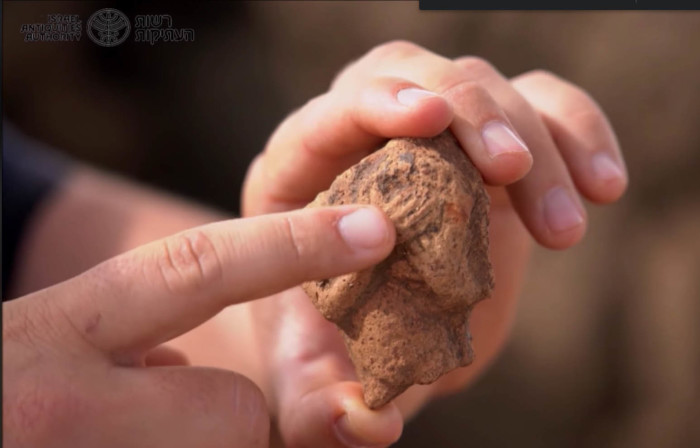Israeli archaeologists find 3,000-y-o fortress from time of King David

Archaeologists carrying out excavations in Israel have found a fortified structure from the time of King David in that country’s Golan region.
The ancient fortress that was built on a hilltop was discovered during excavations by the Israel Antiquities Authority ahead of the construction of a new neighborhood in the Hispin area, the IAA says in a statement on Facebook.
“The complex we exposed was built at a strategic location on the small hilltop, above the El-Al canyon, overlooking the region, at a spot where it was possible to cross the river,” excavation director Barak Zin and Enno Bron said.
The fortress was possibly manned by the Geshurite people, whose capital is recorded in the Bible as having been located nearby, to the north of the Sea of Galilee, according to The Times of Israel, which notes that the Bible mentions that Geshur King Talmai’s daughter, Maachah, married King David out of political reasons and the 10th century BCE Bethsaida thereafter allied itself with King David and his dynasty, the House of David.
Covering over a quarter of an acre, the fort is built of basalt boulders and has walls measuring almost 5 feet thick, Barak Tzin, an archaeologist at the University of Haifa, tells Agence France-Presse.
“The fortified city of Bethsaida is considered by scholars, to be the capital of the Aramean Kingdom of Geshur, that ruled the central and southern Golan 3,000 years ago,” the IAA says in the statement. “Cities of the Kingdom of Geshur are known along the Sea of Galilee shore, including Tel En Gev, Tel Hadar, and Tel Sorag, but sites are hardly known in the Golan. This unique fortified complex raises new research issues on the settlement of the Golan in the Iron Age.”
The archaeologists also found at the site “a large basalt stone with a schematic engraving of two-horned figures with outspread arms.”
The IAA notes that a figure carved on a cultic stone stele was found last year in the Bethsaida Expedition Project. “The stele, depicting a horned figure with outspread arms, was erected next to a raised platform (bama) adjacent to the city gate. This scene was identified by Arav as representing the Moon-God Cult. The Hispin stone was located on a shelf next to the entrance, and not one, but two figures were depicted on it.”
IAA’s scientific adviser in the northern region, Ron Be’eri, was quoted by the Israeli newspaper as saying, “In modern Israel and in the Golan, in particular, we are blessed with a lot of development and construction — often at the expense of the archaeological sites. This site is a national treasure and the IAA is going to do everything it can to make sure it is not hit too.”





























